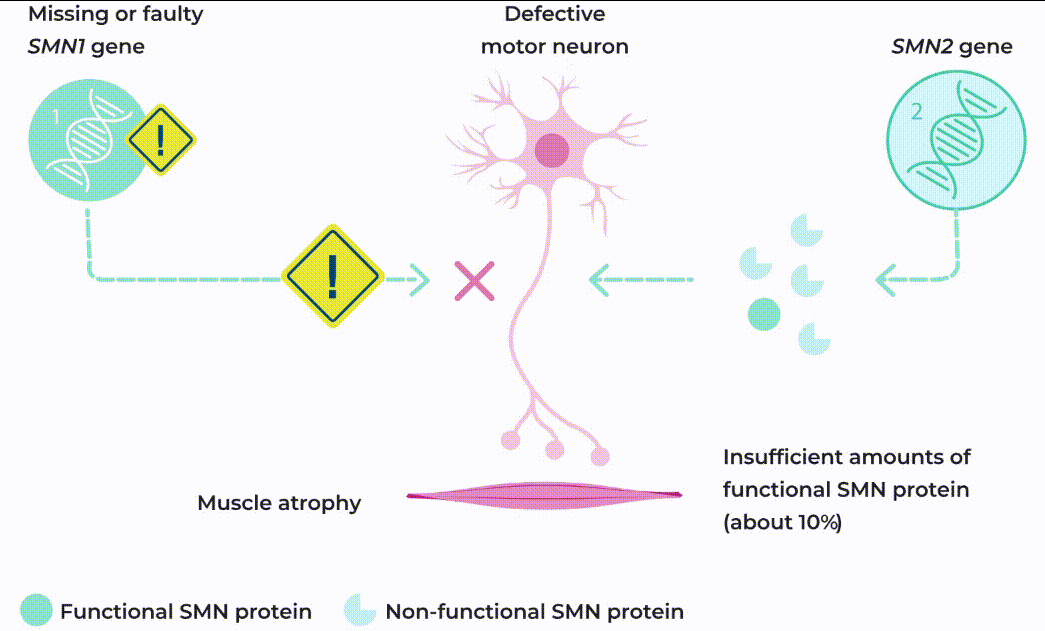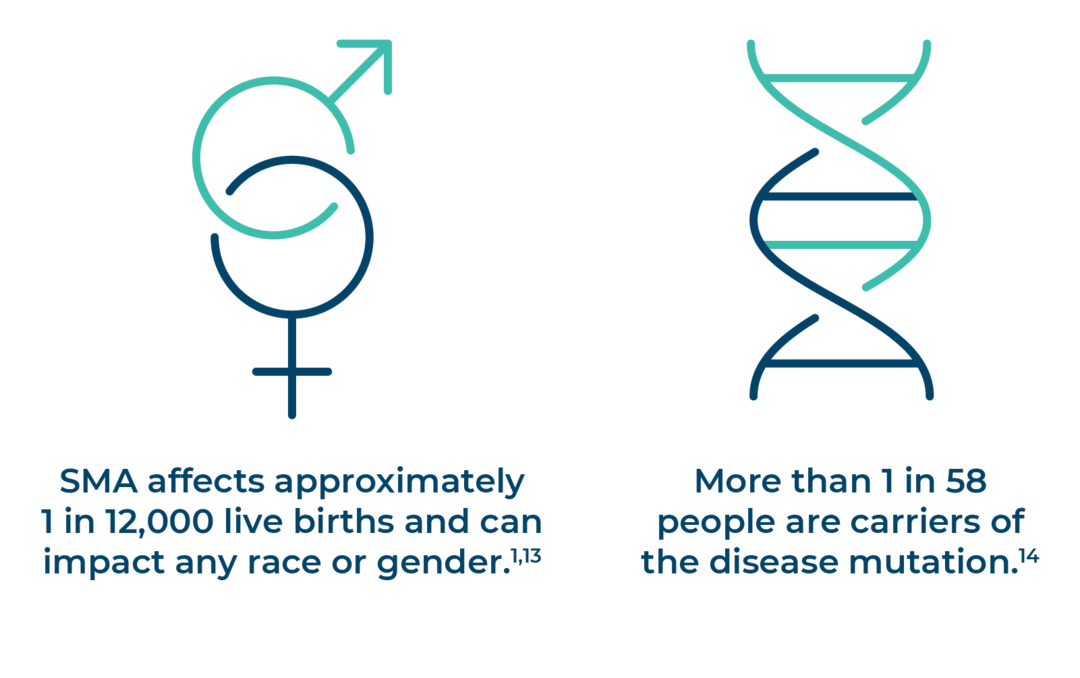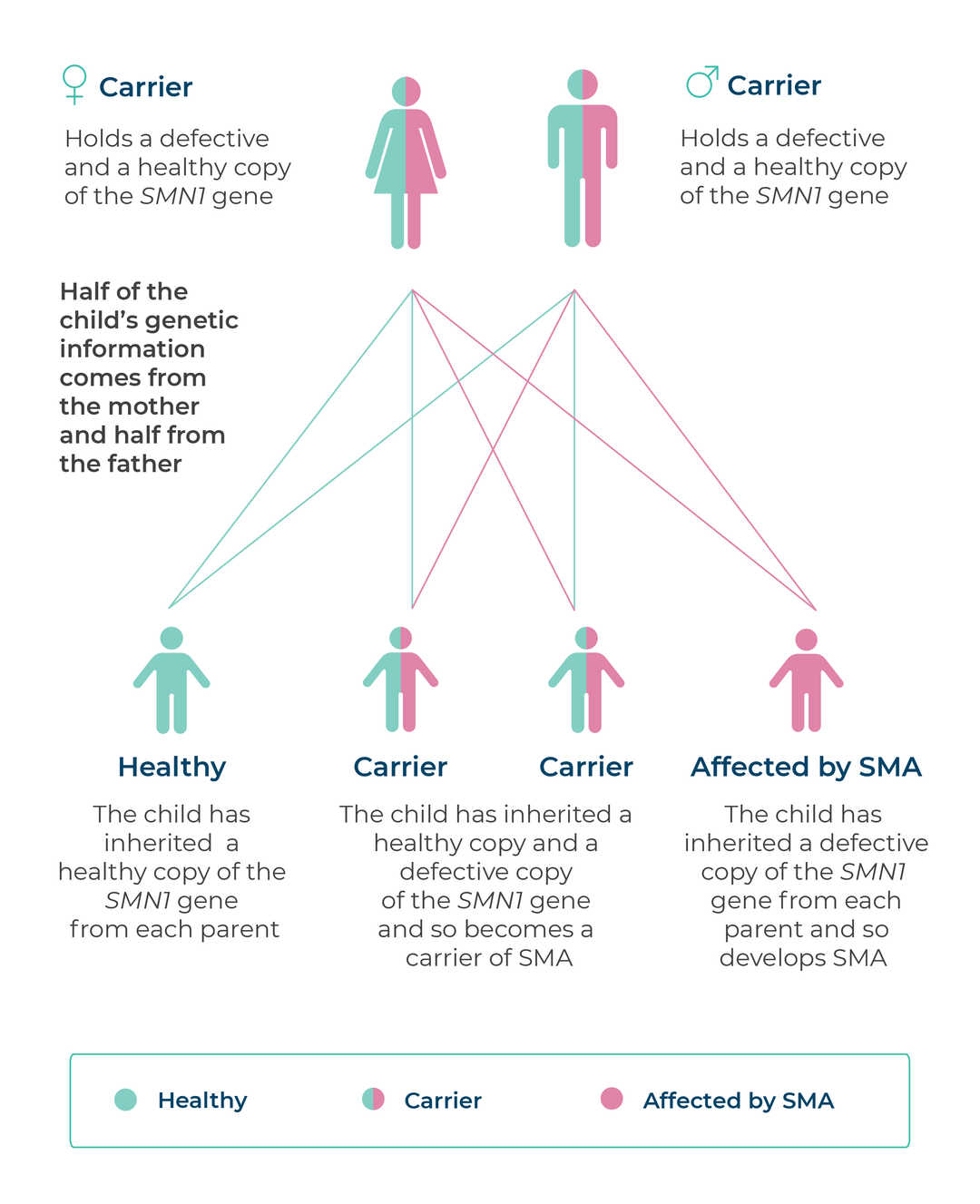What is SMA?
Spinal muscular atrophy (SMA) is a rare genetic disease in which nerves are lost causing weakness of the
muscles. This occurs because special nerve cells in the body that control muscle movement, called motor
neurons, deteriorate and stop working.1-5


WHAT CAUSES SMA?
-
A protein called survival motor neuron (SMN) protein is vital for motor neurons to be able to work properly.1
-
Without SMN protein, motor neurons in the spinal cord stop working and muscles become weaker.5
-
SMN protein is made in the body from the SMN gene.6-8
-
In SMA, the main SMN gene known as SMN1 is faulty or missing.6,9,10
-
There is a second SMN gene known as SMN2 that acts more like a 'back-up' and only produces small amounts of SMN protein.1,6,11
-
In SMA, not enough SMN protein is being produced and the motor neurons stop working causing the muscles to become weaker.6,7

HOW DO YOU GET SMA?
SMA is typically inherited, although occasionally it is caused by a random error in the SMN1 gene1-5
-
Children inherit two copies of the SMN1 gene, one copy from each parent.12
-
People with one healthy and one faulty SMN1 gene are known as carriers, they normally show no signs of SMA.12
-
If both parents are carriers, there is effectively a 25% chance the baby will inherit and develop SMA.12



References
- Verhaart IEC, et al. Orphanet J Rare Dis. 2017;12:124.
- Richter T, et al. Value Health. 2015;18(6):906–14.
- Mercuri E, et al. Neurol. 2019;93(13):e1241–7.
- Mercuri E, et al. Orphanet J Rare Dis. 2020;15(1):84.
- Schorling DC, et al. J Neuromuscl Dis. 2020;7:1–13
- Coovert DD, et al. Hum Mol Genet. 1997;6(8):1205–14.
- Glascock J, et al. J Neuromuscul Dis. 2018;5(2):145–58.
- Serra-Juhe C and Tizzano EF. Eur J Human Genet. 2019;27(12):1774–82.
- Lefebvre S, et al. Cell. 1995;80:155–65.
- National Institute for Health (NIH) (2020a). Genetics home reference. Your guide to understanding genetic conditions. SMN1 gene. Available at: https://ghr.nlm.nih.gov/gene/SMN1. Date accessed: June 2023.
- National Institute for Health (NIH) (2020b). Genetics home reference. Your guide to understanding genetic conditions. SMN2 gene. Available at: https://ghr.nlm.nih.gov/gene/SMN2. Date accessed: June2023.
- Cure SMA (2019). Genetics. Available at: https://www.curesma.org/genetics/. Date accessed: June 2023
- Cure SMA (2019). About SMA. Available at: https://www.curesma.org/about/. Date accessed: June 2023
- Verhaart IEC, et al. Additional file 2: Table S1. Overview carrier frequencies of SMA. Supplementary material to Verhaart IEC, et al. Orphanet J Rare Dis. 2017;12:124. Available at: https://ojrd.biomedcentral.com/articles/10.1186/s13023-017-0671-8. Date accessed: November 2022.